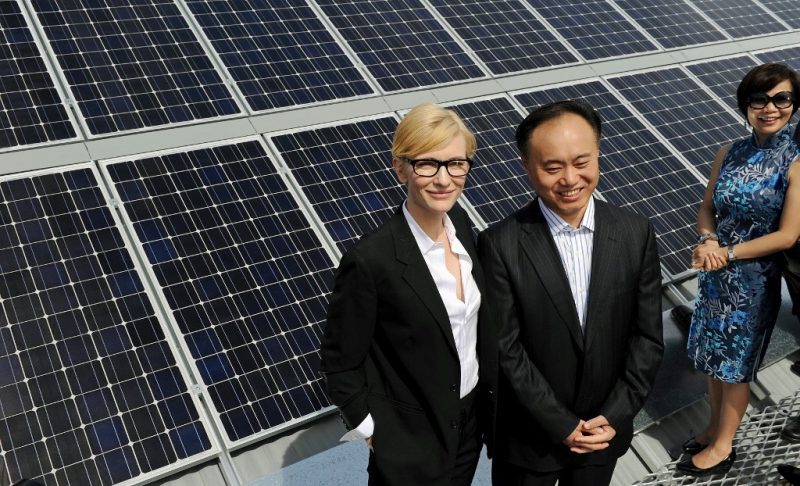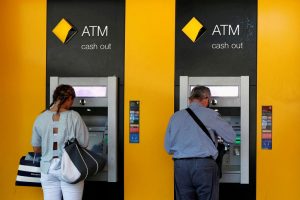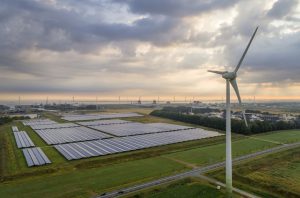Some investors dismayed at the Morrison government’s cool response to solar energy projects are getting up and heading to the US, where the Biden administration is bending over backwards to support them
(AF) More trouble is brewing in Australia’s solar power sector. The most recent installment came on Monday when New South Wales-based solar farms investor New Energy Solar Ltd said it would totally exit the domestic market and focus its efforts in the US.
In a bourse filing the firm said it had signed agreements to sell its 111-MW Beryl and 56-MW Manildra solar farms, that it bought in 2018, to Banpu Energy Australia, a subsidiary of Thai company Banpu Public Co, for A$288 million (US$223 million). The transaction is expected to close in the next two months.
New Energy Solar expects A$105.4 million in gross equity proceeds from the new deal, noting that it lowered the values of the assets due to various transmission hurdles. However, it added that it managed to secure a price above its new net asset value for the Beryl farm. The price for Manildra, for its part, was 20% lower due to transmission constraints.
As of December 31, 2020, the Beryl and Manildra plants had net asset values of A$60 million and A$50.5 million, respectively. Pending regulatory clearance from Australia’s Foreign Investment Review Board (FIRB), the company will operate solely in the US, where it expects record installations in 2021.
Spooking renewables investors
New Energy Solar’s move came a week after the NSW-based firm complained about Australia’s renewable energy policy and regulatory environment, adding that it was looking forward to focusing on the US, where President Joe Biden is seeking to fast-track the country’s green energy transition.
New Energy Solar, one of the few remaining listed renewable energy firms in Australia, said last week it was also looking to sell its two Australian solar farms because investors failed to recognize their value.
In its recently released annual report, company chairman Jeffrey Whelan wrote that there were more reasons for the firm to see opportunities overseas, adding that “the policy and regulatory environment for renewables in Australia is not conducive to growing the business and achieving economies of scale.”
“The US has long had federal and state policies supportive of renewable energy,” he added. “We are also looking forward to an acceleration in the progress of the energy transition and in the uptake of renewable energy technology under the new US administration of President Biden.”
However, New Energy Solar isn’t the only one Down Under singing regulatory blues in the country of some 24 million people.
Last year, London-based infrastructure heavyweight John Laing Group said it was exiting the Australian standalone solar and wind markets, citing transmission loss problems at its 255-MW Sunraysia solar project in NSW. It also said there were ongoing delays with Australia’s Energy Market Operator’s registration process.
Australia-based engineering procurement and construction provider Downer Group in early 2020 also announced its withdrawal from the country’s large-scale solar segment. Company CEO Grant Fenn said at the time that solar operators were faced with issues around connection, grid stability and equipment performance.
Clean Energy Council (CEC), Australia’s renewables energy association, also addressed the growing discontent in a study last August. It found what it described as obstacles surrounding grid connection in Australia that were creating challenges for solar developers.
It added that primary drivers for a fall in investment in the sector for the first half of 2020 were largely related to grid connection process challenges as well as “unpredictable government policy interventions and underinvestment in network capacity, creating congestion and constraints.”
“The obstacles around grid connection are creating substantial challenges for renewable energy developers, and in turn, spooking clean energy investors,” CEC chief executive Kane Thornton said.
A lot of these problems are blamed on the Liberal Party federal government, now led by Prime Minister Scott Morrison, which has been pro-coal for many years for political reasons – its partner in the ruling coalition in Canberra is the National Party, whose rural constituents have traditionally supported coal and other mining projects in rural areas. Former Labor Party Prime Minister Julia Gillard launched a tax on carbon in July 2012, but it was revoked by her successor Tony Abbott in a highly controversial move two years later.
Morrison is infamous for bringing a lump of coal into Parliament in February 2017, when he taunted his political rivals about their anti-coal stance. However, with most business lobby groups and mining company leaders now calling for stronger action, including reintroducing a tax on carbon, his government has opted to promote gas projects as a ‘lower emissions‘ alternative, while ignoring growing international pressure to stop new coal mines from opening or commit to zero emissions by 2050.
Staying the course
However, investors and foreign leaders such as US President Biden – the country’s key military ally – are pushing for more action. The positive news is that most state governments, plus the private sector and Australian citizens have been strong supporters of solar power and other renewable power projects.
And some renewables firms continue to make strides in the country.
Recent developments in NSW’s solar sector have seen construction start on stage one of a 720-MW hybrid solar and battery project in the New England region, while French independent power producer Neoen was approved in March to develop a 350-MW PV plant alongside a 100MW/ 200MWh battery energy storage system.
In April, UK-based offshore wind developer Australis Energy said it was planning to build a 300-MW wind farm in Geographe Bay in Western Australia, a couple of hours south of Perth, the state capital. Once completed, it will include up to 37 turbines with rated capacity of between 8-MW and 15-MW, enough to provide annual electricity supply to more than 200,000 local homes.
Also, seemingly undeterred, the NSW government last week called for a renewable energy zone, representing as much as 8-GW of new infrastructure. NSW’s energy and environment minister, Matt Kean, said the New England zone would deliver A$10.7 billion in private investment and will be a key part of the state’s Electricity Infrastructure Roadmap.
It could also create five renewable energy zones to replace existing power stations as they retire.
With additional reporting by Jim Pollard.
ALSO SEE:
Australia’s green pivot helped by another large offshore wind project
Shift to renewable energy needed by 2035, top researchers say
























